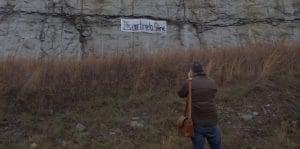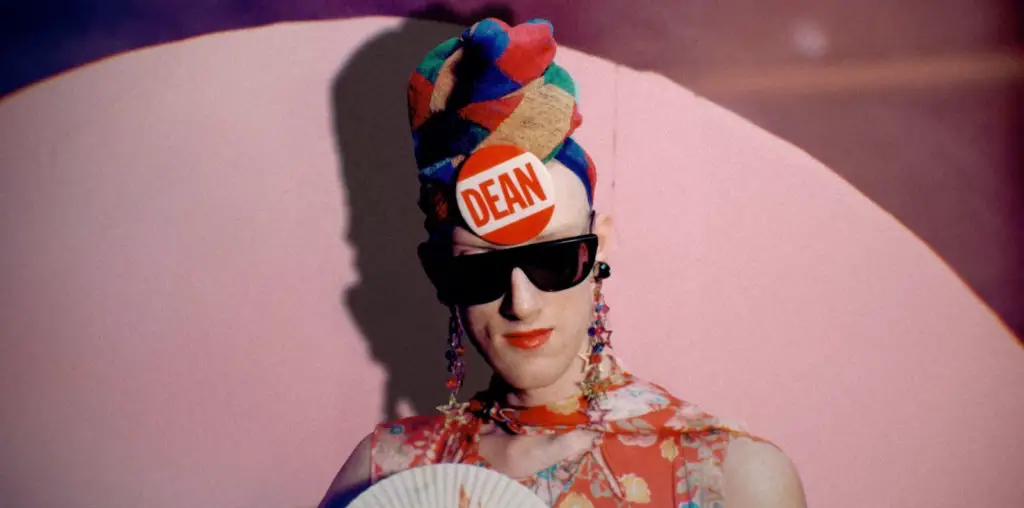
Hillbilly is a very engaging and singular documentary by Ashley York and Sally Rubin that is quite befitting for this divisive political time.
It starts as journalist and filmmaker Ashley York is heading back home, in eastern Kentucky, to observe the effects of the 2016 presidential campaigns and election there. From the first scenes we see that this film will explore the contradictions between the director’s opinions or lifestyle as a progressive now living in L.A. and the traditional way of life of most people in her hometown, as she is greeted by signs of Christ, coal, and the “rebel flag”…
The documentary’s main purpose is to define what it means to be a “hillbilly” on multiple levels, but through a journey to the South and the Appalachian region, it shines a light on its inhabitants, their history, and their portrayals in the media.
In the beginning, Hillbilly reminds us that the Appalachian trail is actually one of the poorest places in America and where the war on poverty originated. This plays an important part in how the rest of the States and the world still view the area as populated by uneducated white people living in abject poverty. While showing us news footage in black & white of dirty kids surrounded by rundown buildings and broken down cars, akin to scenes from The Kid, we learn from various regional historians about the damages and repercussions of this 30s, or coal era, portrayals and the explanation for the “poor white trash”/“hillbilly” legacy.
From there, the film dives into the more personal aspects of this attribute, how it deforms the self-image or self-worth, and as one of the documentary participant states, how it affects the “hate-love relationship with where you are from.”

“Ashley and others make it their missions to open the conversation and change the misconceptions about them by painting a more nuanced and realistic portrait of the multitudes of Appalachian Americans.”
The filmmakers with the help of writers, scholars, local people of color or “Affrilachians,” LGBTQ+ residents, rural voters, proud “rednecks,” and organizations offering refuge to the marginalized, tackle these subjects via 3 main axes: Media representation or stereotypes in film & TV, the political aspect or recently the “Trump effect,” and, the rural vs urban identity clashes accentuated by the exploitation of natural resources.
Through the media lens, Hillbilly shows the long history of stereotyping that has plagued the Appalachian region as grotesque and the ongoing contribution, notably with reality-TV, to these caricatures of rural whites from this parts (and southerners). And so, Ashley and others make it their missions to open the conversation and change the misconceptions about them by painting a more nuanced and realistic portrait of the multitudes of Appalachian Americans.
During the political segments of the film, we are reminded that “the great divide” was always there, but if there is one thing Trump made greater, it is definitely that! This resonated throughout the film but it made for one of the most touching and poignant moment on the 2016 election day. We witness enthused minority democrat voters going to the polls hoping for a brighter future only to be followed by the profound sadness after the result and the depressed feelings of these people who are now “stuck” in places that will probably be even more dangerous for them. In spite of it all, the co-directors want to stay optimistic as interviews with small-town liberals and, notably, York’s Republican-voting family, show that there’s still hope for unity because everybody living there, young or old, black or white, have similar experiences brought on by shared economic status and locations.
The most refreshing and unique portion of the documentary is the one focusing on the establishment of the “hillbilly identity” and how it indicates that, contrary to popular beliefs, “it’s not always a race thing.”
Filming occurred in many cities and at many events (including the Hillbilly Days festival) where people of all background, age or ethnicity identify as such, being proud of their origins and the way they look. However, some mentioned that sadly prejudices make them feel silence or lesser, being an obstacle to their successes because, as explained by specialists, the constant abasement get woven into their identities. Many who moved to bigger cities, like the directors, feel they are being treated like “others” or immigrants from another country which produces shame and even self-hatred. And so, they resort to code-switching for respect or erasure of themselves by sterilizing their cultures, regional uniqueness and accents in order to “speak correctly” and be understood.
Alternatively, it was interesting to learn that everybody around the world has their own Appalachians, people from the hills, “rednecks” or “hillbillies.” From Aussie “bogan” to the equivalent word found in China; everywhere in the world there is somebody or groups of folks one can feel superior to. Thus, we come to understand how dangerous it can be when one starts to believe the stereotypes and caricatures of these people as a threat to civilization or progress.

“A compelling and timely documentary raising a lot of valid points while being charming and fun.”
On the other hand, the documentary also briefly touches on the recent trend of “white trash is the new hipster,” or how a misjudged way of life and style is now being subverted for profit. A participant witnessing many urban residents proclaiming or attaching themselves to his rural values and attributes – like the “Rachel Dolezals of hillbilly”- furiously exclaimed that if “it’s not your experience you should leave it alone!”
Hillbilly is surely entertaining and informative, yet, and unfortunately it is not without faults. It is quite difficult to craft a documentary that will play as both equally personal and observational, and sadly there is an uneven balancing between one director’s own journey back to her roots and the subjects at large. York is rightfully too involved as it is, in part, also her story and features many members of her family, but this also contributed to film often changing style or tonal differences. It did not felt as smooth as it should have been and it is possibly one of the way one could tell this project was made by two different persons.
The documentary was likewise slightly confusing in terms of its timeline and wobbly in its back and forth approach showing a lack of straightforward direction. It was also, at time, contradictory or all “over-the-place” as it tried to voice every concern, and maybe being too ambitious for its own good. Thus, however pleasant to watch, with great ideas at the center, a solid beginning and a good ending, it felt that there were no clear guide or path on how things were unfolded on-screen, hence, one would not be completely wrong if one were to wish for a bit more fine-tuning.
At the end of the day, Hillbilly still achieves to be a compelling and timely documentary raising a lot of valid points while being charming and fun. Ashley York and Sally Rubin want to own their “hillbillyness” to educate and change viewers’ perceptions of their misunderstood regions. They aim to rectify or update the definition and essence of “hillbilly,” but more importantly, they want to open our eyes about the constant neglecting, and worse, the exploitation of a people and a land with devastating consequences but without meaningful support from government or the public.
Hillbilly (2018) Written and directed by Ashley York and Sally Ruben.
6.5/10


[…] Post Source Here […]